
Go to Midwest Weeds and Wildflowers Home Page
European Marsh Thistle, European Swamp Thistle
Cirsium palustre (L.) Scop.
Asteraceae (Sunflower Family)

▲▼ seedlings

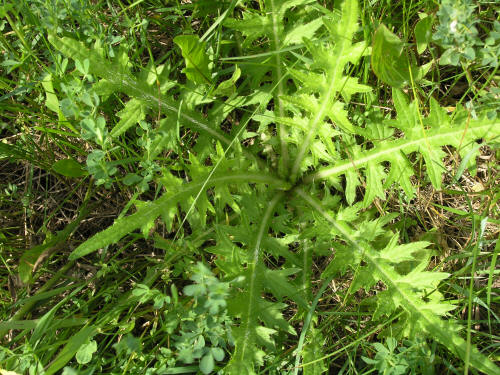
▲▼first year rosettes, showing purplish leaf margins on lower rosette
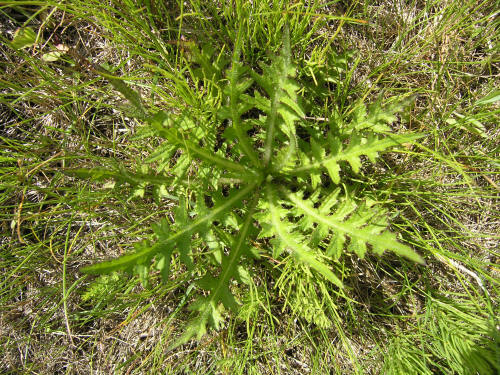
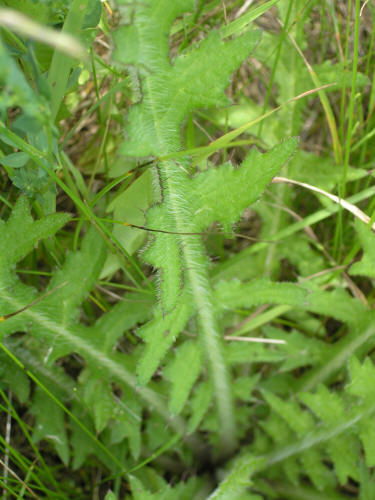
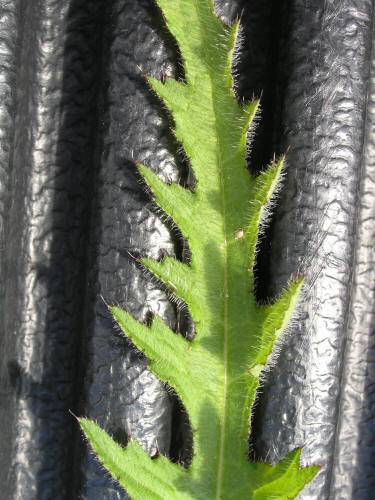
▲▼long, soft, white hairs on leaf upper and lower surfaces

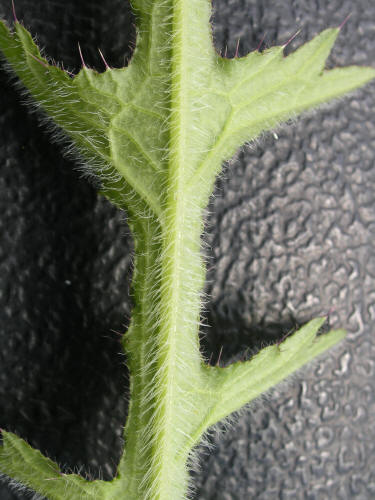

▲▼ plants just starting to flower; above one on left has more purplish-brown stem
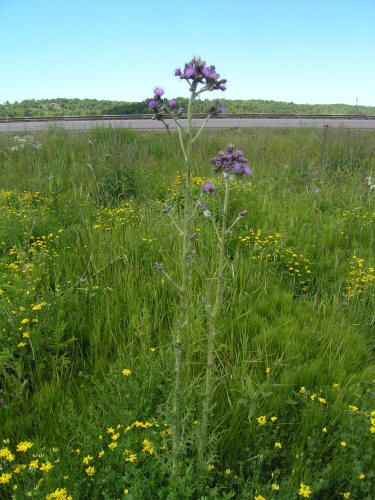
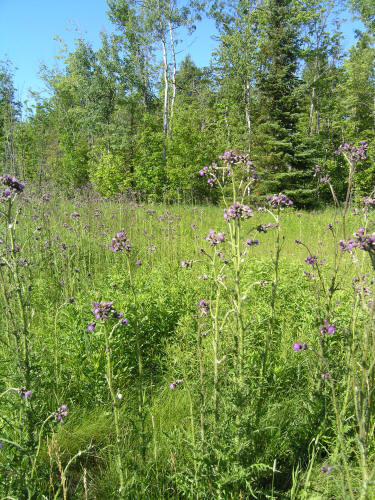
▲▼ more mature flowering plants, showing more elongated branching
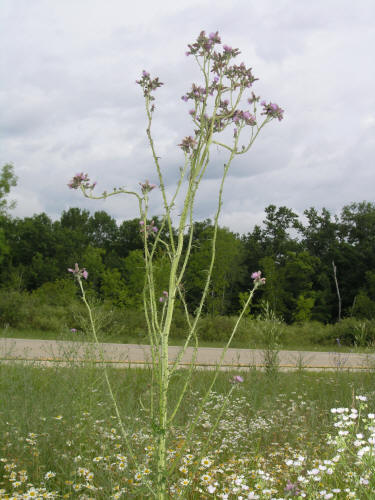

▲ base of flowering stem
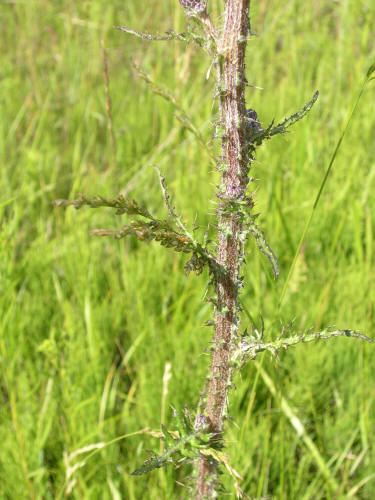
▲▼flowering stems showing ridges and leafy-based spines
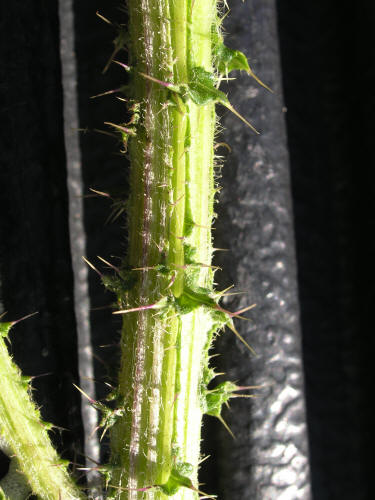
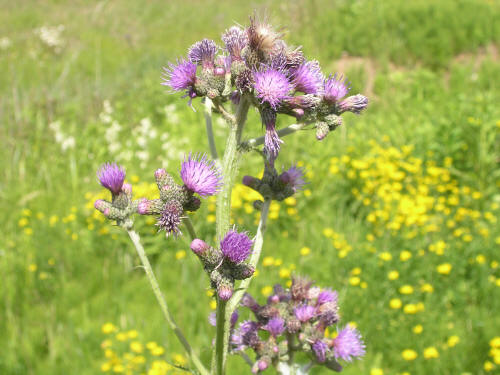
▲▼flowers/inflorescences
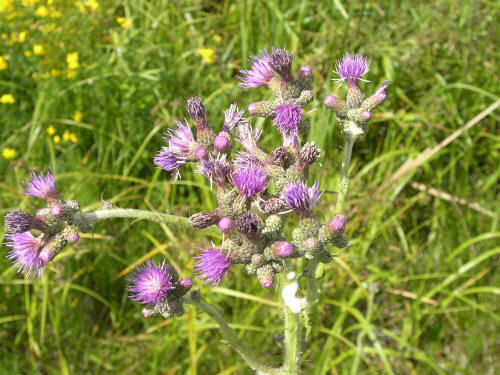
▲▼flowers/inflorescences
▲▼flowers/inflorescences
▲▼flowers/inflorescences
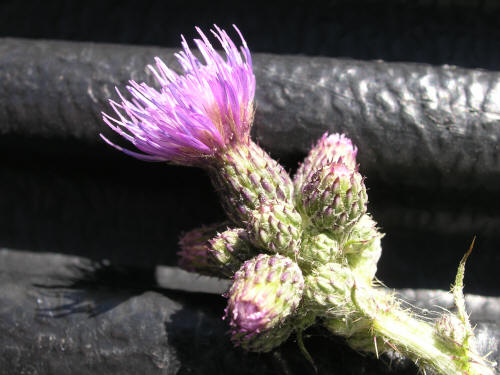
▲▼flower bud details
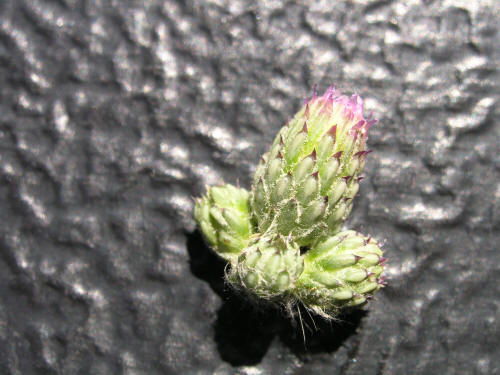
▲ large population along roadside in Upper Peninsula Michigan
Cirsium palustre
(L.) Scop., European Marsh Thistle, European Swamp Thistle:
(Bayer Code:
CIRPA; US Code CIPA6)
·
Invasive European biennial or short-lived perennial
thistle that first forms a rosette of bright green deeply-lobed leaves
(sometimes with purplish leaf bases or leaf margins) and many soft hairs/spines
on leaf undersides, particularly along midveins
·
Produces solitary, slender, ridged flowering stems in
second year (sometimes later) that grows 2-6 feet tall; stems are green to
purplish, with many tiny winged spines along the stem; stems often very hairy
(almost cobwebby)
·
Flowering stems branch in upper portions with many
slender, spiny, hairy (spindly) branches
·
Inflorescences are purplish, small (1/2 inch diameter)
head-type inflorescences that are clustered at the tips of the flowering stems
(more clustered than other biennial thistle species)
·
Flowers have only ray flowers, pinkish-purple to dark
purple, and bracts on outside of inflorescence do not have spines on them
·
Native to Europe, moving into northern and northeastern
U.S. states; potentially quite invasive
·
May appear somewhat similar to native
swamp thistle (Cirsium
muticum), that also lacks spines on bracts
below flowering heads, but swamp produces larger flower heads that are usually
born singly at the tips of stems, rather than smaller heads in clusters as on
European marsh thistle
·
Canada thistle (Cirsium
arvense) also lacks spines on bracts below
flowering heads, but it normally grows much shorter and will produce creeping
roots